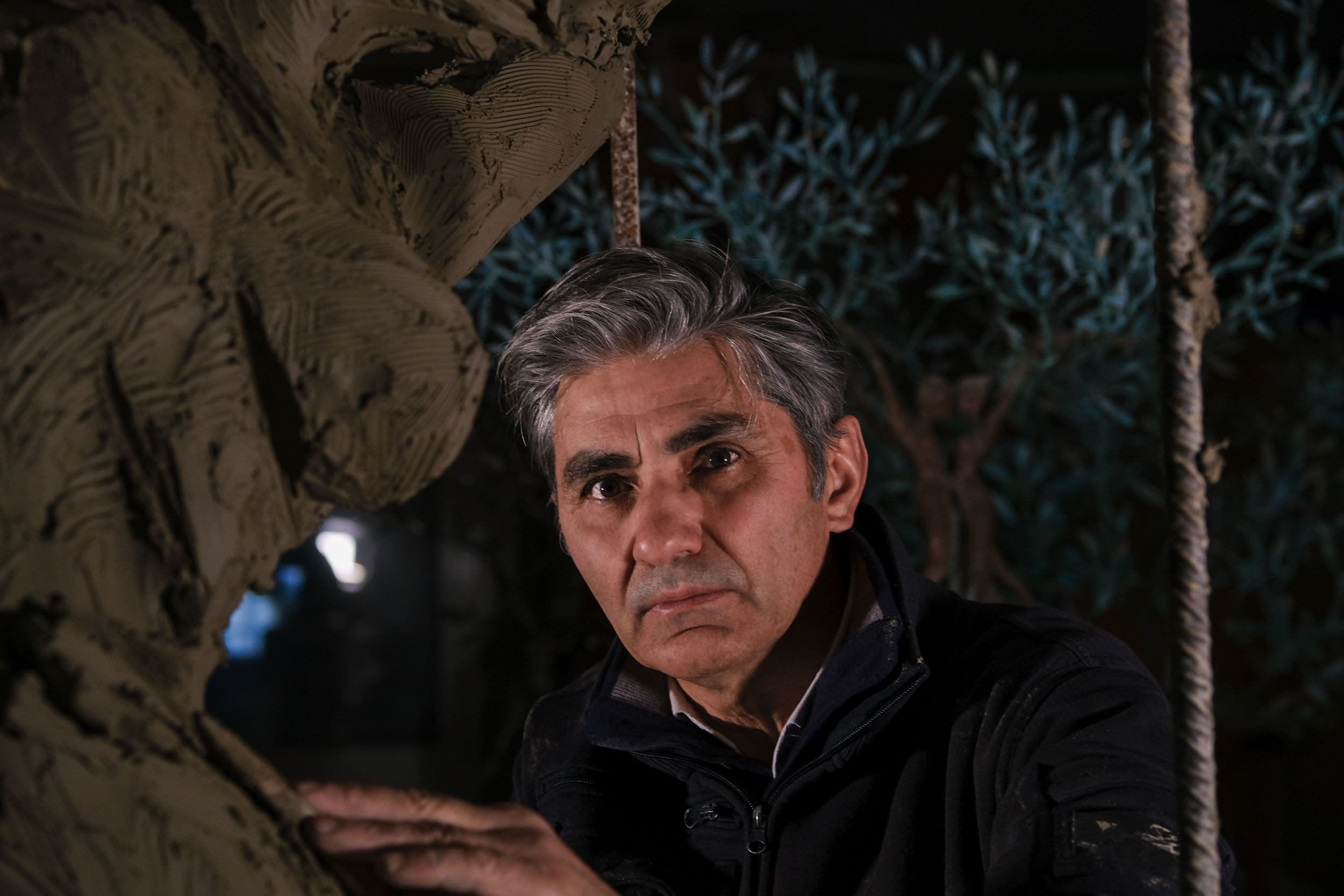By Simone Bandini
Photo by Giacomo Roggi
Usual update on the activities and exhibitions in progress of Maestro Andrea Roggi, with an in-depth analysis of the archetypal and founding ideas of his artistic production.
Maestro, in your artistic evolution, how much is ‘collective’ and how much personal? That is, how much derives from what your land and genes have passed on to you and how much from your personal experience, from your actions?
My artistic evolution is deeply rooted in a fusion of personal and collective elements. Having been born and raised in the heart of Tuscany, the beauty and harmony of the surrounding countryside have become for me not only a source of inspiration, but an integral part of my identity. Nestled among the hills, centuries-old olive trees and a landscape that seems suspended in time, I learned from a young age to recognize the subtle harmony that binds everything. Nature has taught me that nothing exists in isolation, that every element, from the smallest to the largest, has an essential role in a larger balance. This understanding has become a central part of my artistic research, in which I try to reflect this web of invisible connections that also resonate in the human soul.
The link with the territory is also expressed through technique: the ancient method of lost-wax casting, already used by the Etruscans, is a tradition that has allowed me to keep alive the dialogue with the history of my land. However, over time I felt the need to go further, to experiment and innovate, developing “dynamic casting”, a technique that allows bronze to take fluid forms, expressing a sense of movement and vitality.
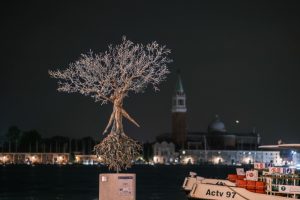
Each sculpture is therefore an encounter between the old and the new, between my experience and the collective heritage of my land. In this journey I discovered that the Energy of Life – this invisible energy that transcends individual boundaries – is not only an inner force, but a bond that unites us all, a universal vibration that crosses eras and identities. My work wants to celebrate this deep bond, this mysterious balance that makes each individual part of a larger whole, where tradition and innovation dance together to create something eternal.
In this key; What do you feel you can ‘give back’ with your works to your land and how much to the whole world, what universal message?
I feel I have to give back to my land what it has given me: the depth of its roots, the harmony of its landscape, the memory of its traditions and the hope for a better future. Through lost-wax casting, I honour an ancient technique that encompasses the wisdom of generations, a way to reconnect the present to the past and infuse eternity into the beauty of what has been. The olive trees, the cypresses, the profiles of the Tuscan hills become an integral part of my sculptures as symbols of resilience, continuity, of a living relationship between man and nature.
But art, by its disposal, transcends borders. It is not only a tribute to what belongs to me, but an open door to the universal. With my work I try to give shape to a message that speaks to everyone, that is, that this energy that flows between us is not only symbolic, but real: it is love that moves the world, creativity that transforms, human potential that can build a new future.
Ultimately, I give back to my land an act of care, a tribute to its soul. To the world, I offer a message of hope, a call to rediscover the sense of mutual belonging and respect for our planet. Art, for me, is an act of healing and awareness, a space where we can feel our interdependence and find inspiration to take action. Giving back is not just a gesture towards the past or the present, but a gift to the future, a seed of hope that, I hope, can germinate in anyone who meets my creations. If my sculptures can awaken even a fragment of this awareness, then my deepest intent is realized.
The global geopolitical situation sees many crises underway and many others in the making. What is happening in your opinion? And how does the role of the artist change – if we want to give him one – in this radically changed context?
The current geopolitical situation reflects a time of great instability, in which humanitarian, environmental, social and economic crises are intertwined in a complex and often painful mosaic. We are immersed in a reality of growing tensions, but also of profound transformations, in which old certainties crumble, leaving room for new questions about our future. However, in every moment of crisis there is also a possibility: that of looking deeper, of reconsidering priorities, of choosing a new path.
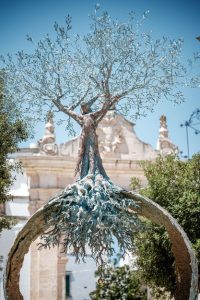 In this context, I believe that the role of the artist is more important than ever. If art has always had the power to tell and reflect the times, today it must also become an instrument of connection and hope. The artist is called to be a witness of his time, not only to document the present, but to propose a vision that can inspire change.
In this context, I believe that the role of the artist is more important than ever. If art has always had the power to tell and reflect the times, today it must also become an instrument of connection and hope. The artist is called to be a witness of his time, not only to document the present, but to propose a vision that can inspire change.
For me, art is never just a reflection of reality, but a bridge to the possible. Despite the complexity of the current context, my vision remains imbued with optimism. Art, by its very nature, is an act of hope: the transformation of raw material into something meaningful is a gesture that affirms the possibility of changing, of creating, of imagining a different future. I believe that, in difficult times, the artist must become the bearer of a concrete hope, not naïve, but rooted in the awareness that change starts from small gestures, from new ways of seeing and acting.
Reality and ideality. In the creative process, is it matter, nature with its forms that inspires you or rather is it the idea, its constitutive spirit that shapes your works? Do you feel ‘platonic’ in this sense?
I don’t like to define myself, nor to constrain my creative process within the rigid boundaries of categories such as reality and ideality, matter or spirit. Each of my works comes from an undefined terrain, a place where nature and idea, form and intuition meet and shape each other. I cannot say that inspiration comes only from the observation of reality, nor that it arises exclusively from an abstract idea: rather, the creative process is a continuous dialogue between the external and internal worlds, between matter and the soul. Sometimes, a twisted branch or a hillside profile suggests a direction to me, other times it is an intuition, a thought without a precise form that comes to life and body as I create.
If I look at my work through Plato’s eyes, I could say that my sculptures try to evoke something that resembles what he called an “idea”, that is, a timeless essence. But I never feel distant or abstract: the idea for me is already in the material, in its folds, in its resistance and movements, and in the ability of the form to suggest meanings. It is as if the material already contained the seed of the image that it will become and I was only a means that allows that essence to emerge. In this sense, it is not only I who shapes the sculpture, but also the material itself that transforms me, that teaches me to see more deeply.
My relationship with creation is a continuous coming and going between reality and ideality. Nature, with its forms, its rhythms and its almost imperfect beauty, speaks to me of the infinite possibility of transformation. At the same time, the idea guides every gesture, gives direction and meaning, pushes me to look for something deeper. It is not a question of choosing between a tangible reality and an abstract ideal, but of uniting these two worlds into a single vision.
I believe that the most authentic art is a living synthesis, capable of evoking the beauty and mystery of the visible and the invisible. Through my sculptures, I try to create a bridge between these two worlds, remembering that the most authentic truth is found precisely at that point where the visible and the intangible touch. This is where my art takes shape: in that incessant dialogue between what I can see and what I can only intuit, between the matter that resists and the idea that pushes to emerge.
I ask you this question because in your works there are symbols that, at a minimally attentive glance, turn out to be universal archetypes. The sphere, for example, is a complete microcosm and an open macrocosm, in the making…
It’s true, the symbols I choose, such as the sphere, are elements that seem simple, but contain a universal depth. The sphere, in particular, has an archetypal force that transcends time and space, it is a perfect and at the same time infinite form.
In my vision, as already mentioned, it represents the “Energy of Life”: an eternal flow, a symbol of universal connection that embraces all forms of life, transcending the individual dimension to include the entire cosmos. This intrinsic duality of the sphere, which contains within it a principle of completeness, but projects towards infinity, reflects my desire to explore the tension between the interiority of the individual and the immensity of the universe. When an observer approaches its circular shape, he is not just looking at an object: he is invited to reflect on himself, on his own existence in relation to the whole, on how each individual being is a microcosm that participates in a larger cosmic movement.
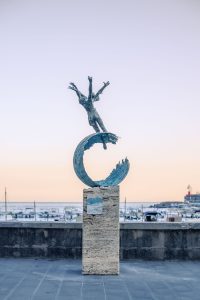 In a sense, these archetypes are never closed in on themselves but are invitations to open up to infinite interpretations. I do not want to impose a definitive reading, but rather to stimulate the feeling that each viewer, based on his or her sensitivity, can grasp a piece of that infinity that the sphere represents. The work of art, for me, is never just a static object, but an organism that breathes and transforms together with the observer.
In a sense, these archetypes are never closed in on themselves but are invitations to open up to infinite interpretations. I do not want to impose a definitive reading, but rather to stimulate the feeling that each viewer, based on his or her sensitivity, can grasp a piece of that infinity that the sphere represents. The work of art, for me, is never just a static object, but an organism that breathes and transforms together with the observer.
My work is not just an aesthetic research, my hope is that, by observing these forms, everyone can find their own interpretation, their own reflection. In this way, the work becomes an open symbol, a container of meanings that are awakened only through the sensitivity of the viewer.
Geometry and nature. In your sculptures, the world of ideal and ancestral forms intersects perfectly with material ones. An instinctive ‘plastic’ process or the result of deductive speculation?
My work arises from a constant dialogue between ideal forms and the material that expresses them, a process that is not purely instinctive nor totally rational. It is a fusion of intuition and reflection, in which natural laws and ideas meet, with geometry marrying to living form. I do not try to separate these aspects, because I believe that beauty emerges precisely from this synthesis between ideal perfection and material imperfection, between thought and gesture.
Nature is my main teacher: I don’t just observe its shapes, but I try to understand its deep geometry, that symmetry that is hidden in the folds of a leaf, in the spirals of a branch or in the growth cycles of a tree. The instinct that drives me to shape is immediately confronted with the desire for harmony, proportion and balance. Each sculpture is an encounter between what nature suggests and what my thought intends to express.
Alongside this instinctive component, there is always a reflective intention that guides the hand. This is not mathematical reasoning, but a profound research that explores the relationship between matter and form, between visible and invisible. The ideal form emerges as a reminder of cosmic harmony, but the material, with its resistance and malleability, always suggests new, sometimes unexpected developments.
In this way, my creative process is never static. Each sculpture is the result of a continuous exchange between the instinct that responds to the material and the reflection that aims to restore a cosmic order. The forms that emerge are both ancestral and contemporary, rooted in nature but projected towards a dimension that transcends the simple physical datum, trying to grasp that beauty that manifests itself both in chaos and in order, in the material form that can never be completely separated from the spirit that animates it.
During the Christmas period the following open-air exhibitions will be visible:
Terra Mater | Earth and Heaven, an open-air exhibition by Andrea Roggi in Matera; 9 pieces installed in the heart of the city between the historic centre and the Sassi.
The exhibition, which began in 2023, has been extended and there is still no defined end date for the exhibition. The exhibition is proposed as a path of aesthetic and intellectual contemplation around the themes that inspire Roggi’s poetics, such as, for example, the relationship with nature, or the personal relationship with one’s cultural roots, as well as the relationship between the individual and time, related to the undisputed protagonist of the initiative, namely Mother Earth. The Master, through his intimate tribute to Mother Earth, communicates both the urgency of returning to love the planet that has nourished mankind for millennia, and the urgency of taking control of what has been left to us as a gift from the experiences of the past, so that this can be actively used in order to achieve – almost in the manner of ancient Greek philosophies – a virtuous collective state of awareness and balance.
Roots of Humanity, an open-air exhibition by Andrea Roggi in Martina Franca; 6 works installed in the historic center from 15 June 2024 to 30 April 2025.
The exhibition opens up to the contamination of the universal languages of life, in the white setting of the city overlooking Valle d’Itria: Martina Franca. His are the contours of a poetic painting that brings back peace and the authentic values of humanity. New spaces and new perspectives of beauty embrace form in a multifaceted spectrum of light that takes us upwards. Bowing instead to the roots, in nature we find the teacher who guides us towards knowledge. In an age that sometimes seems dominated by human difference, and at a time when we are increasingly aware of the lowering of drawbridges, what is visible represents only a small part of the fragile coexistence of life.
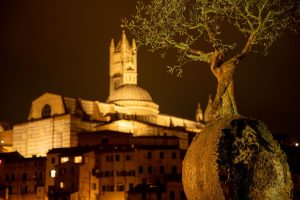
Lĕvĭtās, an open-air exhibition by Andrea Roggi in Amalfi; 5 monumental works on display from 18 July 2024. Given the success achieved, the exhibition has been extended until January 9 and will also be visible during the Christmas period.
Through the exhibition Lĕvĭtās, the artist leads into the ‘spatial dimension’, into a physical relationship with nature and the architecture of the city, in a path of memory that leads to the future. With lightness, a lightness through which the most overflowing beauty emerges that allows those who admire them to regain possession of space, time, light. The investigation of movement is a constant, even the most physically static subjects have in fact in their form a trend that recalls the idea of motion. The works on display, all stretched out in their elevation towards the sky, invite us to reflect on the intimate search of every human being who seeks to rise towards infinity. Ultimately, the bronze sculptures presented in Amalfi communicate to us that we can rise from this earthly condition of ours towards something higher, whether it is the search for knowledge, or the love of life, or universal brotherhood, we are directed towards heaven, towards high goals.
Info: LA SCULTURA DI ANDREA ROGGI, Località Manciano 236b, Castiglion Fiorentino (Ar) / Tel. 0575 653401 / www.andrearoggi.com / info@andrearoggi.com
